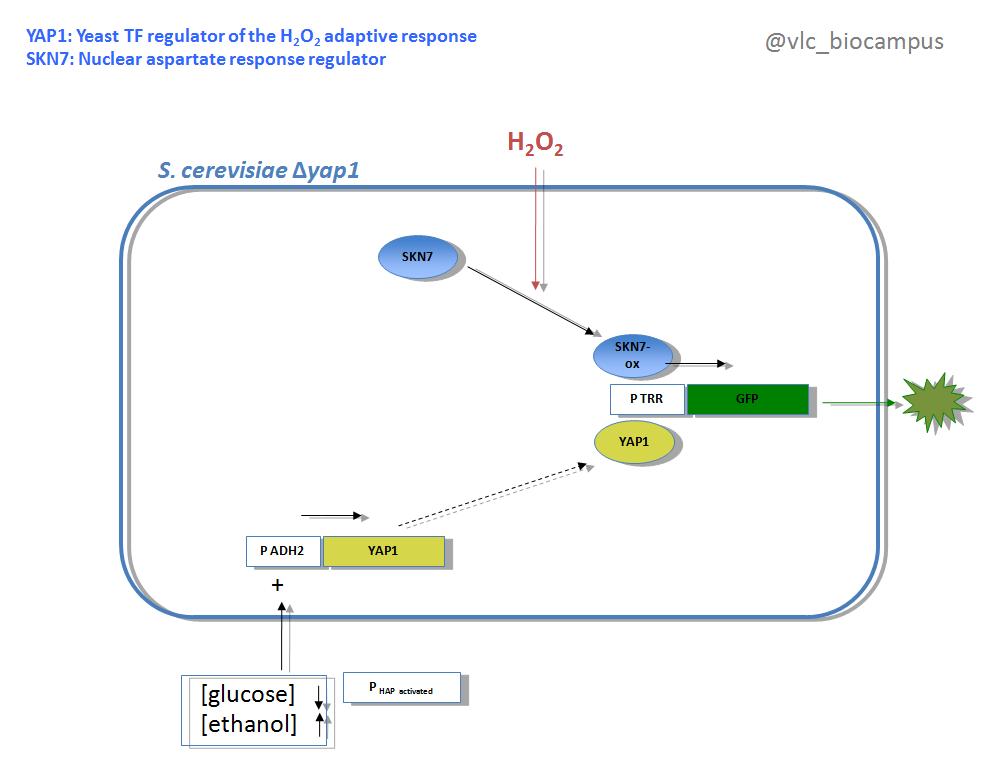Team:Valencia Biocampus/Yeast
From 2012.igem.org
(→Outline) |
(→Outline) |
||
| Line 22: | Line 22: | ||
- We carried out four transformations of E. coli, one for each DNA (the two constructions and the two vectors), in order to amplify them. ''See the protocol [[here]].'' | - We carried out four transformations of E. coli, one for each DNA (the two constructions and the two vectors), in order to amplify them. ''See the protocol [[here]].'' | ||
| - | - Once amplified, we extracted the DNA. | + | - Once amplified, we extracted the DNA. See the protocol <a href="https://2012.igem.org/Team:Valencia_Biocampus/Yeast#Protocols">Here</a> |
- We ligated the TRR-GFP construction with the Yep352 vector and the ADH2-YAP1 construction with the Yeplac181 vector. ''See the protocols [[here]].'' | - We ligated the TRR-GFP construction with the Yep352 vector and the ADH2-YAP1 construction with the Yeplac181 vector. ''See the protocols [[here]].'' | ||
Revision as of 08:48, 21 August 2012

Yeast Subteam
The Idea
Our aim in this part of the project is to detect when the yeast starts to ferment. To do this, we are going to use two gene constructions. The first construction consists of the ADH2 promoter fused to the YAP1 protein coding sequence. In the second construction the TRR promoter is fused to the GFP (Green Fluorescence Protein) coding sequence.
We use the ADH2 promoter (alcohol dehydrogenase) to sense the glucose/ethanol concentration. When this promoter is activated, YAP1 is expressed. This protein will attach to TRR promoter (thioredoxin reductase), which will become activated if the constitutive yeast protein SKN7 is in its oxidized form and also interacts with the promoter. This activation will enable transcription of GFP. H2O2 has to be added in order to oxidize the SKN7 protein.
Outline
- We ordered the DNA constructions: ADH2 promoter-YAP1 protein and TRR promoter-GFP protein.
- We had the Yeplac181 and Yep352 yeast vectors in our laboratory.
- We carried out four transformations of E. coli, one for each DNA (the two constructions and the two vectors), in order to amplify them. See the protocol here.
- Once amplified, we extracted the DNA. See the protocol <a href="https://2012.igem.org/Team:Valencia_Biocampus/Yeast#Protocols">Here</a>
- We ligated the TRR-GFP construction with the Yep352 vector and the ADH2-YAP1 construction with the Yeplac181 vector. See the protocols here.
- We introduced the products of the ligations in yeast. See the protocol here.
- We measured the fluorescence obtained for different glucose concentrations.
- We obtained a curve relating these values.
Protocols
Here goes the protocols
 "
"






